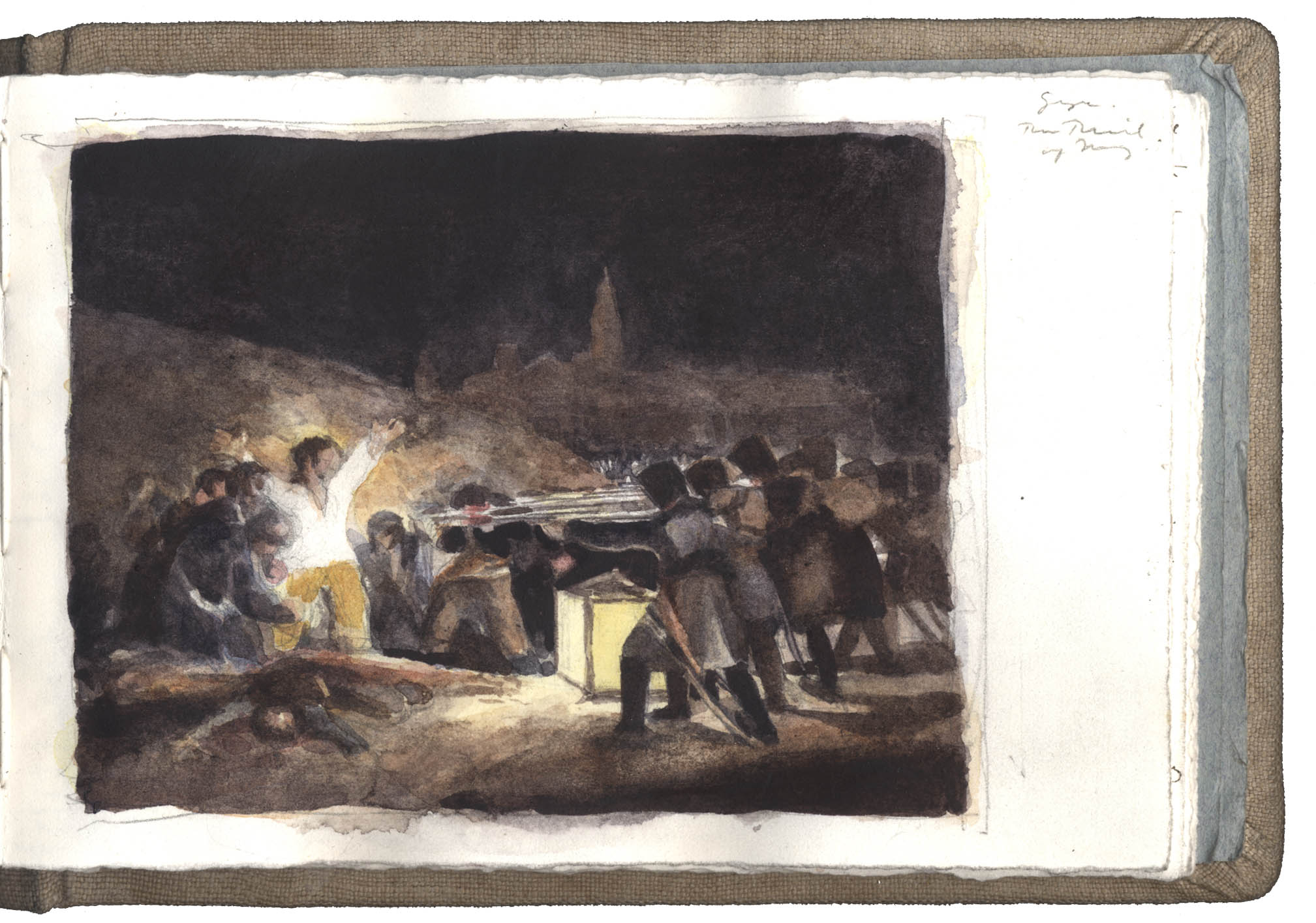 Study after Francisco Goya, Third of May 1808, watercolor and graphite on Arches paper in bound volume, 4 x 6″
Study after Francisco Goya, Third of May 1808, watercolor and graphite on Arches paper in bound volume, 4 x 6″
I was in second grade when I noticed a book on the coffee table in our living room; Fifty Centuries of Art by Francis Henry Taylor. This was surely my first immersion into the strange, fantastic, beautiful, and sometimes disturbing world of fine art. I remember paging slowly until I discovered the works by Francisco Goya. At bottom left was an image that startled me; the Third of May, 1808. I wanted to look away, yet I couldn’t. Who is that man with his arms raised? Why are the soldiers shooting him? Who are these gunmen, I can’t see their faces? How horrible, the dead already piled in the foreground and those soon to die in the background! This was the stuff of nightmares; to a young child there is no difference between image and actual event. Eventually, I learned the historical fact that Napoleon’s troops had executed Madrid’s insurgents who rose up against them; but Goya relied largely upon his imagination when he painted this masterpiece seven years after the event. Goya had taken a rectangle of canvas and used techniques developed over the centuries; linear perspective, atmospheric perspective, sfumato, others; and had created an image that shook me, changed the shape of my brain, and shifted my world view by waging its potent magic. I looked at Goya’s work and wanted to learn that magic. I began there.
Link to image of Goya’s original oil painting, Third of May 1808.